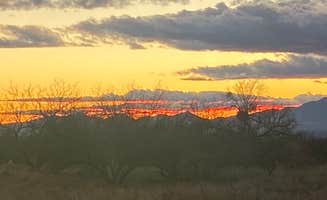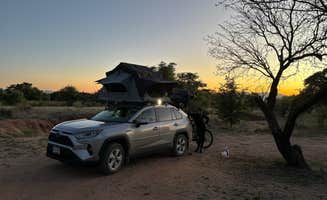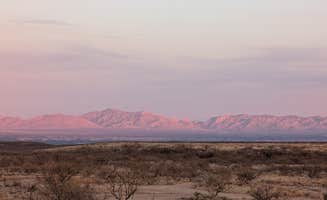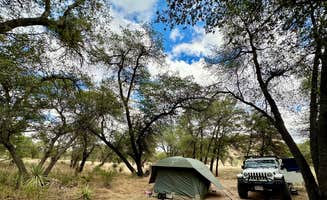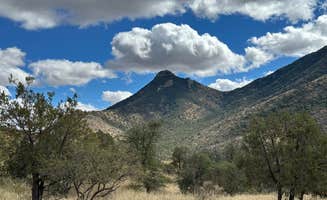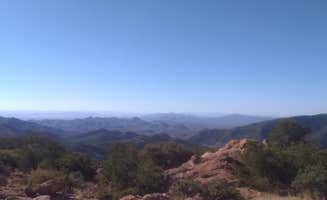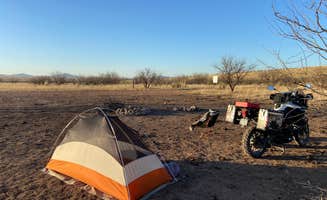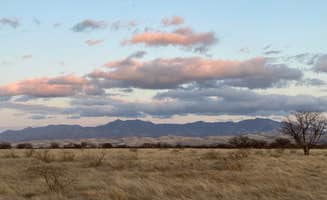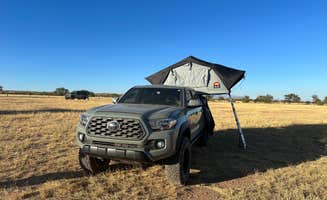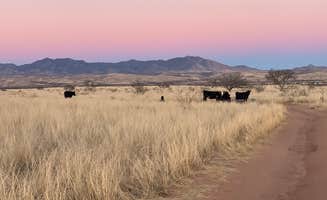Primitive camping near St. David, Arizona occurs primarily on public lands at elevations between 4,000-5,000 feet, creating distinct temperature variations between summer days and nights. The area's high desert ecosystem features mesquite thickets, grasslands, and rocky outcroppings with seasonal monsoon patterns typically occurring July through September. Free-range cattle often wander through campsites, especially in conservation areas and national forest boundaries.
What to do
Hiking in the Cochise Stronghold area: Access trail networks from West Hunt Road dispersed sites, approximately 25 miles from St. David. "Road in is bad but not horrible. Lots of sites and many open on Wednesday in late February. Great views and clean. 1.5 miles to campground and trailhead," notes a West Hunt Road camper.
Wildlife viewing at Las Cienegas Conservation Area: The 44,000-acre area hosts diverse wildlife including pronghorn antelope, Coues deer, and prairie dogs. "Empire Ranch has a great but small museum, with trails around it for walking, nice restrooms, free water for filling your RV, and a rich history," explains a visitor to Cieneguita Dispersed Camping Area.
Rock climbing in the Dragoon Mountains: The distinctive rock formations attract climbers year-round. "You can wake up with cattle around your spot," mentions one camper about the area's unique experience, while another noted they "watched people free climb up then back down" the extremely steep rock faces.
What campers like
Secluded campsites with privacy: Many sites offer substantial distance between neighbors. At Road Canyon, "There were maybe 4 different spots along the road. We saw one person with a large trailer parked at the spot closest to the main road, but could barely see them once we set up our camp," reports one Road Canyon Camping Area visitor.
Exceptional stargazing opportunities: The minimal light pollution creates optimal night sky viewing conditions. A camper at Tombstone Camp on Forest Road 687 described the experience: "The darkness is incredible."
Affordable extended stays: Most dispersed sites allow camping for up to 14 days. "BLM Numbered campsites, but you can also go to the end of that campground and there's a fence you can go through and there's camping out that way also. Two weeks camping permitted. No services good Verizon," notes one camper.
What you should know
Road conditions require planning: Most access routes feature washboard sections and occasional rough terrain. "The road up was a little rough and slippery, in some places. It had rained a few days before. I was fine without 4x4, but did slide in a few places," reports a camper at Camp Site 001 Dispersed Site.
Limited amenities require full self-sufficiency: Very few sites offer any facilities. "Dispersed camping, no amenities, but FREE. Easy drive in on partially washboarded flat gravel road. The dirt road into Road Canyon is manageable, just drive with caution," explains one visitor.
Cell service varies significantly by location: Reception depends on elevation and terrain features. "I have T-mobile. I didn't get a signal at all, but I have a T-mobile internet modem, and it got a good signal," notes a camper, while others report "Good Verizon and AT&T reception" in certain areas.
Tips for camping with families
Fire safety awareness: Seasonal restrictions may prohibit campfires. "Lots of camping spots with fire rings," notes one camper, but conditions can change rapidly, especially during spring winds and summer drought periods.
Wildlife encounters preparation: Children should understand appropriate behavior around local wildlife. "You may wake up several mornings to see them in 'your backyard'. There are Coues deer (a small whitetail), pronghorns (get up early to see them), a prairie dog town, coyotes can be heard many nights, and all kinds of birds," explains a visitor to Dragoon Mountains.
Water availability planning: No potable water exists at most sites. "Empire Ranch has nice restrooms, free water for filling your RV," reports one camper, providing a crucial resupply point approximately 30-45 minutes from most camping areas.
Tips from RVers
Length restrictions matter: Many dispersed camping roads become progressively narrower and rougher. "I would not suggest any large campers to go very far past the first few sites the road gets narrow and rough," advises one camper.
Site selection strategies: Larger rigs should scout first. "Large level valley with approx 20 designated spots. No facilities. Awesome rock views. 4 miles bumpy dirt road is worth. We did it with a 25 foot travel trailer," reports a visitor at Battle of the Bulls Bridge.
Seasonal timing considerations: Winter nights can drop below freezing. "You're roughly at 5000' so winter camping be prepared for snow on occasion. It also can be a little breezy," notes an experienced camper familiar with the area's variable conditions.



